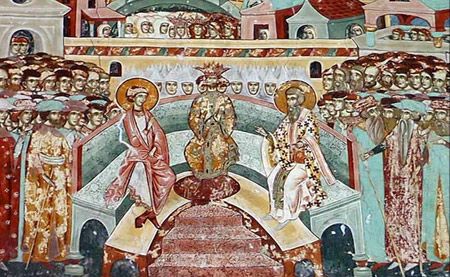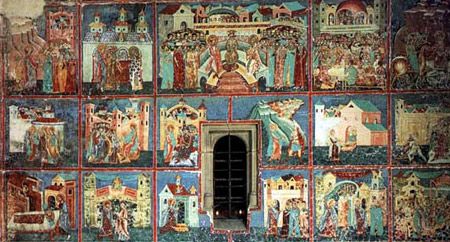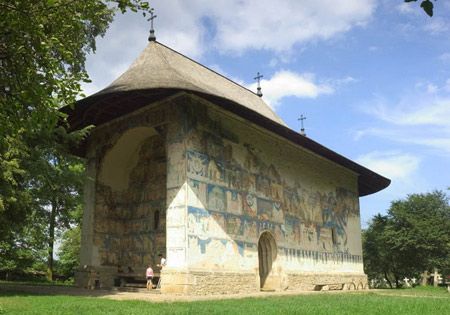A small distance from the city of Suceava you can discover a small, yet important monastery in Moldavia, Arbore, dating from the 16th century and preserved in surprisingly good condition, a fine example of religious art and tradition for the Orthodox world. This very special place of worship was built in the summer of 1503 by Luca Arbore, who was a real persona dn one of the generals of the famous ruler Stephen the Great. According to historians, Arbore wanted to build here a church, following in the footsteps of the ruler, and gave it the consecration of Saint John the Baptist.

It is not a large or impressive complex, but a small one, with and equally small church, but what really sets apart this place is the quality and diversity of the religious artworks, not to mention it's history and atmosphere. For the Arbore Monastery is also special because of the connection and mixture with the natural beauty of landscapes and forests in the region, although there are only about 30 kilometers to Suceava. It is like another world.

The freshness and quality of the outside frescoes and interior paintings are simply amazing, as they used a green background, which is remarkably similar to the special blue used for Voronet. Unfortunatelly, little is known about the original recipe for this colour, as it had been lost over time, but the shade is surprisingly versatile and can be used for various compositions and mixes.Scientists have carefully examined the composition, but so far they couldn't even come close to the original recipe. Another mistery, lost in the shades of time, or until some old, dusty manuscript is rediscovered.
Most of the scenes painted on the outside or inside of the church are naturally taken from the Bible, but there are many from folk tales and superstitions or various episodes from the lives of the saints, some of these surprisingly detailed. With a delicate style and vivid colours, impresssive games of perspective, lifelike characters, it is hard to believe that these were painted several hundred years ago, in Moldavia. Visitors and art critics have always been particularly impressed by scenes inspired by the Last Judgement, the return of the prodigal son, the suffering and resurection of Christ or the detailed Siege of Constantinople

It is fascinating to see how much care and work the artists of so long ago put into decorating the small church and making the Arbore Monastery such a special place of believers and non-believers art lovers alike. The carefulness of the lines, the colours, the somewhat naïve dimension of the scenes, the introduction of folk elements and decorations, all of these mix in special works of art, hard to reproduce or find elsewhare. Inside the monastery one can also visit a small, yet very good ethnographic museum, with a wide range of exhibits, some of these being very, very onld and valuable. Also, here you can see the gravers of Arbore and his wife, as a small reward for their work and devotion to the church.
After several renovations, the church has been included unto the UNESCO list of protected historical and cultural landmarks. Which was a right thing to do, and a visit to the Arbore Monastery, anytime of the year, will prove it.
Photo : crestinortodox.ro
September 2008

































